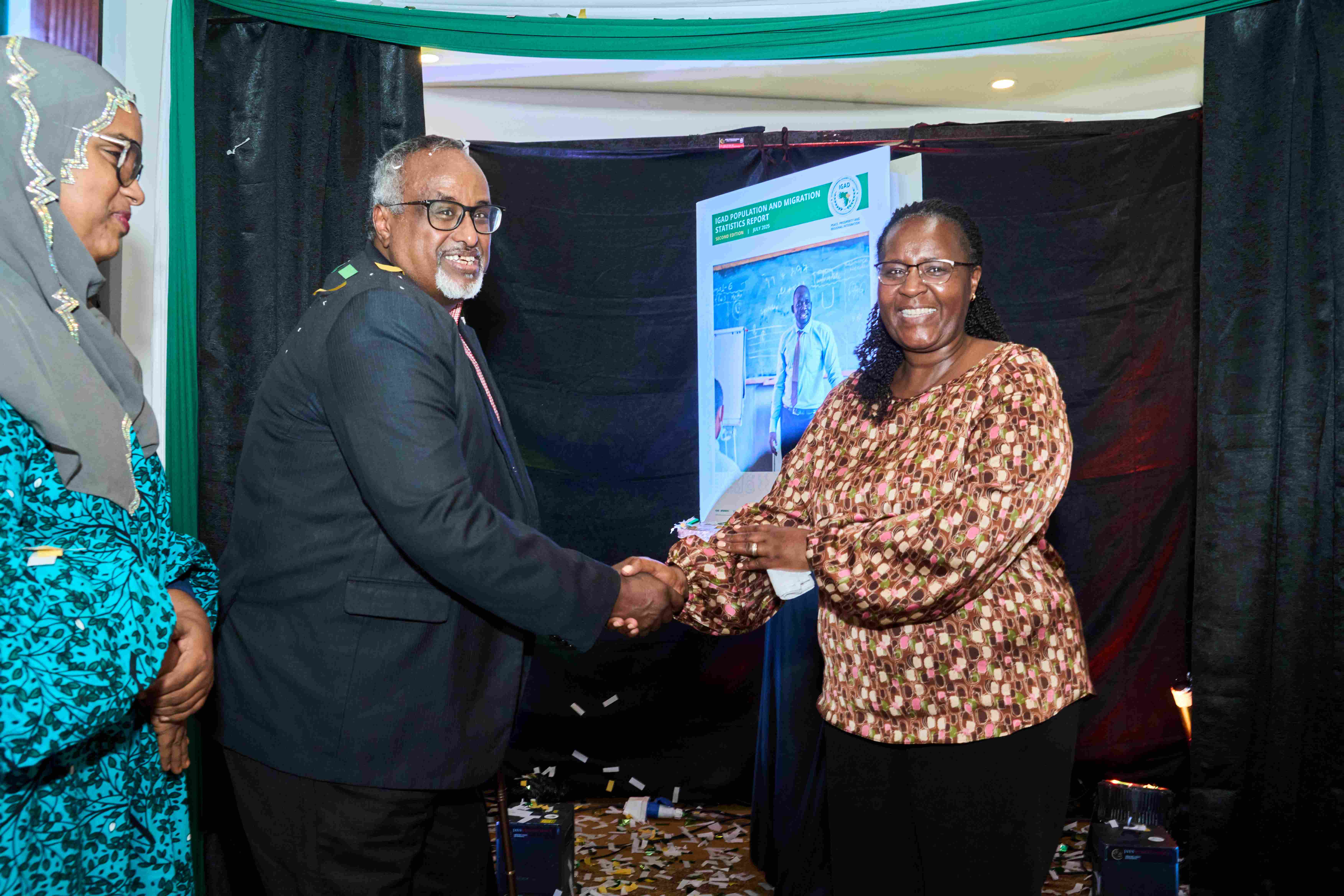

Igad’s Oumalkaire Ahmed, Moaghed Ware and Rosemary Bowen in Mombasa on Thursday / BRIAN OTIENO
Migration of people in the Igad region is on the rise, underscoring the need for stronger data collection systems, harmonised statistics and evidence-based policies, a report has indicated.
Igad deputy executive secretary Mohamed Ware said reliable information is essential to guide collective action among the eight member states.
“It is through availability of accurate, reliable and timely data that we can develop evidence-based policies and national development plans to achieve the prospects of a resilient, peaceful, prosperous and integrated region where citizens enjoy a high quality of life,” Ware said.
He spoke on Thursday during the launch of the second edition of the Igad population and migration statistics report, which covers the period from 2010 to 2022.
The report indicates that in less than a decade, international migrants have increased by nearly 66 per cent, from 4.1 million in 2013 to 6.8 million in 2022.
Protracted conflicts in Sudan, South Sudan and Somalia, combined with political instability, recurrent droughts and food insecurity continue to displace millions.
By the end of 2022, the region, which includes Djibouti, Eritrea, Ethiopia, Kenya, Somalia, South Sudan, Sudan and Uganda, hosted 4.3 million refugees, representing one in every six globally.
Host communities, under pressure themselves, are forced to share scarce resources, healthcare and education with those displaced.
The main migration pathways used include the Eastern corridor through Yemen to the Middle East, the Northern route through Sudan and Libya towards Europe and the Southern passage through Kenya and Tanzania to South Africa.
Charles Ogola, Igad secretariat’s statistician at the health and social development division, said the region’s population in 2022 was 283 million, a significant increase from 217 million in 2012.
The region covers about 5.2 million square kilometres and forms a fifth of the African population.
In 2022, its GDP was around $338 billion (Sh43.7 trillion), with the working age population standing at around 169.7 million, of which 50.4 per cent are women.
The labour force increased from 81.8 million in 2010 to 117.5 million in 2022.
“The working age migrants comprised 63.3 per cent of the total migrants,” Ogola noted when unpacking the report, adding that women and children form the majority of the refugees and asylum seekers.
Migrant labour force participation rate was at 69.6 per cent for men versus 47.6 per cent for women.
“That shows a big gender gap of about 22 per cent,” Ogola said.
Oumalkaire Ahmed, the Djibouti representative, said migration—whether cross-border, labour mobility or any other—remains at the heart of the region’s development story.
“For us to manage this phenomenon effectively, we must understand it first, by ensuring we have credible information that is easily comparable and also very comprehensive,” she said.
She called on member states to strengthen their partnerships and ensure the production of regular, more reliable data and effective reports that will support policy development and decision-making.
“Remember, migration is about the people, their aspirations, their challenges and contributions. So we need to have robust data so that we can have policies that harness the protection of migrant workers,” Ahmed said.
Kenya National Bureau of Statistics director general Macdonald Obudho said migration is a phenomenon that transcends borders, driven by a complex interplay of economic, social, political and environmental factors.
In a speech read on his behalf by the KNBS acting director of population statistics Rosemary Bowen, Obudho said migration in the Igad region presents not only a challenge but also an opportunity because it is a driver of growth, cultural exchange and regional integration.
“However, it also presents significant governance challenges, particularly in ensuring safe, orderly and regular migration while addressing irregular migration and its associated risks,” the DG said.
Kenya, he said, has long been a hub for migration, serving as a place of origin, transit and destination for migrants and refugees.
Obudho said the report highlights the need for harmonised definitions, methodologies and data collection systems to ensure the production of reliable, timely and comparable migration statistics.
“As we launch this report, let us commit to implementing its recommendations and filling the gaps where necessary,” the director general said.
“Let us strengthen our national statistical systems, enhance regional cooperation and invest in the capacity of our institutions to collect, analyse and utilise migration data. By doing so, we can ensure that migration contributes to sustainable development, both within our region and beyond.”












